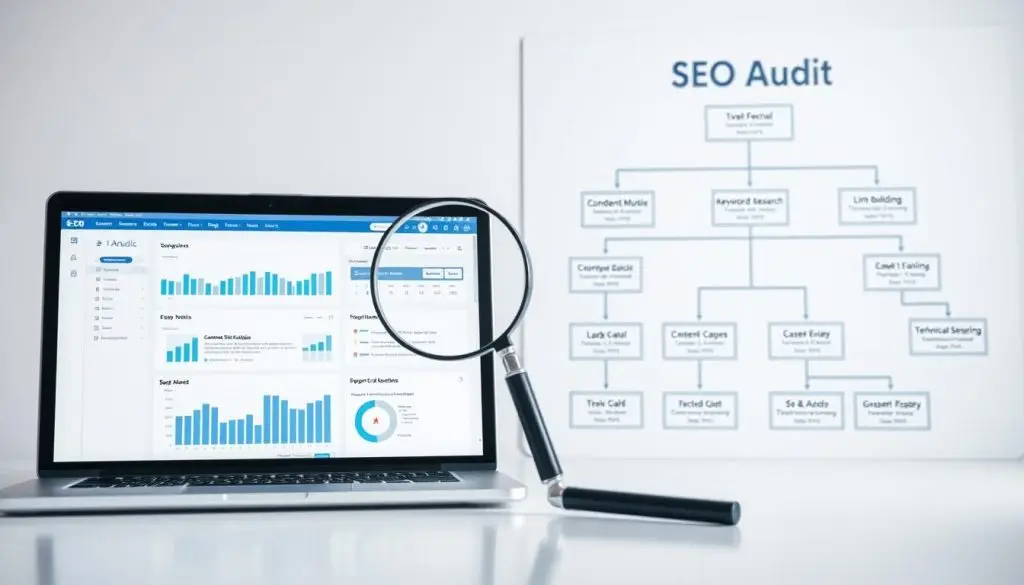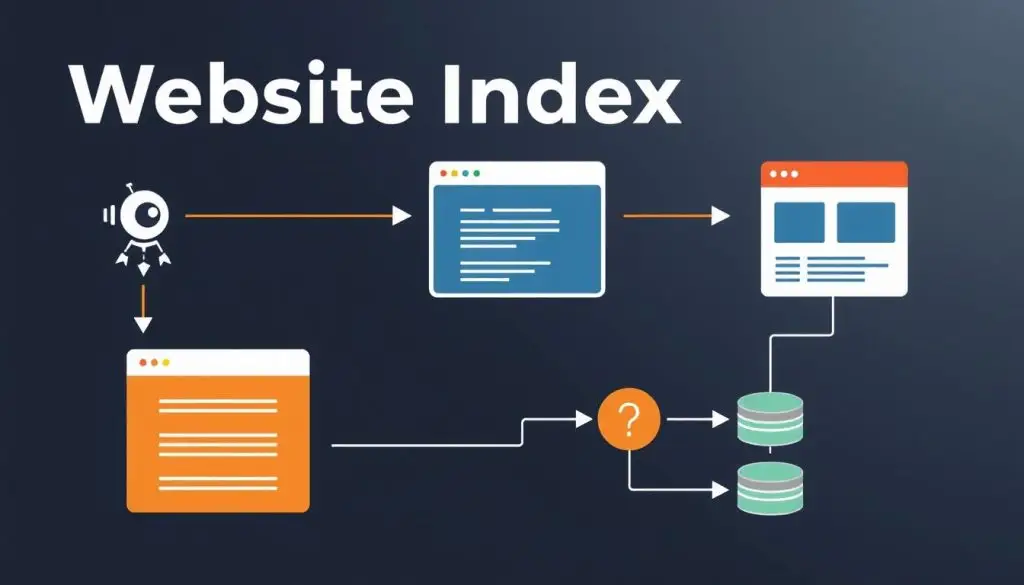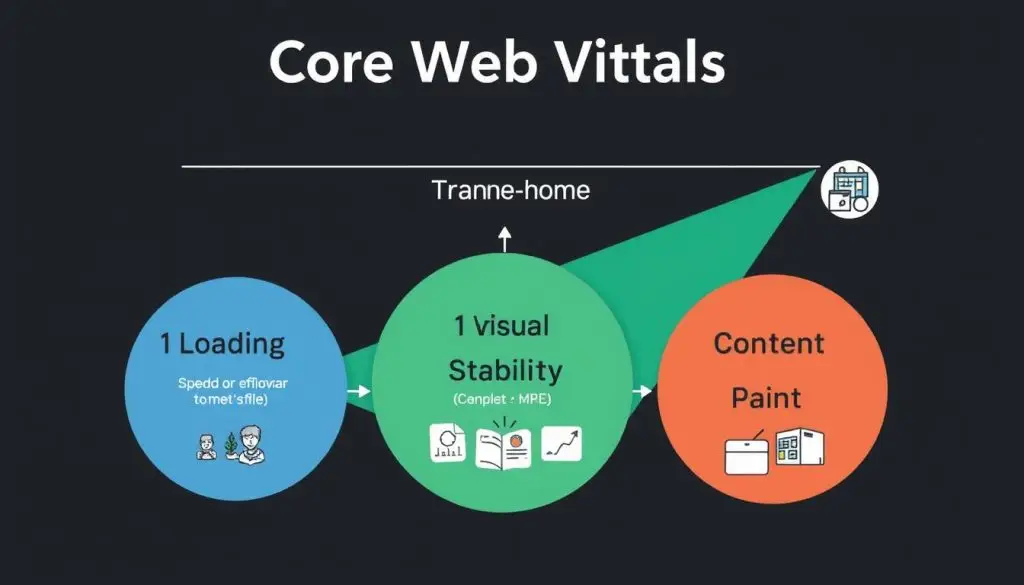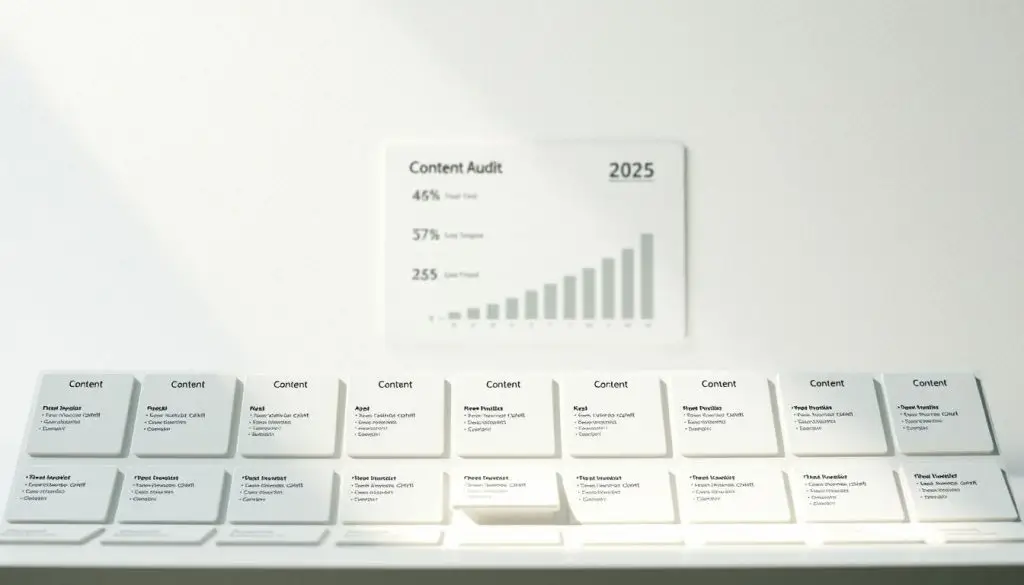Conducting a Comprehensive SEO Audit: A Guide to SEO Excellence
Discover the ultimate guide to conducting a comprehensive SEO audit. Learn how to optimize your website’s performance and improve search engine rankings effectively.

Comprehensive SEO Audit
Comprehensive SEO Audit: Have you ever wondered what lies beneath your website’s search engine performance? It’s more than just numbers and rankings—it’s the soul of your digital presence.
An SEO audit acts as a mirror, reflecting how well your site connects with both users and algorithms. It’s not just about fixing what’s broken. It’s about understanding your site’s purpose in the vast digital universe.
This process evaluates your website’s health by analyzing technical issues, content quality, and backlink profiles. Think of it as a philosophical inquiry into your site’s journey.
We’ll explore how an audit uncovers flaws and mysteries while asking bigger questions. This guide blends practical steps with introspective insights for those seeking wisdom.
By the end, you’ll see this not as a task but as a transformative process. One that aligns your site’s technical reality with its human purpose.
Comprehensive SEO Audit Key Takeaways
- An SEO audit evaluates your website’s current optimization for search engines
- It identifies both technical issues and content opportunities
- The process examines backlinks, user experience, and overall site health
- Audits provide actionable insights for improving search performance
- This evaluation should be your first step when working with any website
- It reveals how well your site serves both users and search algorithms
- The audit process combines technical analysis with strategic understanding
What is an SEO Audit and Why It’s Your First Step
What if you could see your digital presence through the lens of search algorithms? That moment of clarity is exactly what this diagnostic process provides.
An SEO audit acts as your website’s truth-teller. It reveals how well your pages connect with both human visitors and search engines. This evaluation gives you deep insights into what’s working and what needs attention.
I’ve watched websites struggle for visibility, only to discover that a simple evaluation could have shown the way forward. Why do we often avoid this essential first step? Perhaps it’s the fear of what we might uncover.
But what if those discoveries hold the key to unlocking your site’s true potential? Search engines evolve constantly—Google updates its algorithm 500-600 times yearly. Without regular check-ups, even well-optimized sites can fall behind.
This process isn’t just about numbers and metrics. It’s about understanding the story your content tells. We measure not just technical health, but emotional resonance.
Think of it as your compass in the digital wilderness. Without it, you’re navigating blind, unaware of hidden barriers keeping your site from shining. The audit illuminates your path forward.
What if your website could be more than it is today? This evaluation provides the answers. It’s your first step toward meaningful growth and lasting visibility.
Pre-Audit Preparation: Setting the Stage for Success
Before we dive into the technical depths, let’s pause. What if the most profound discoveries begin with simple observation?
This preparation phase isn’t about complex tools or technical wizardry. It’s about listening to your website’s heartbeat and understanding its current rhythm before we try to change its tempo.
I’ve learned that meaningful transformation starts with honest assessment. We must first acknowledge where we stand before we can map where we’re going.
Why do we often rush past this crucial step? Perhaps we fear what the numbers might reveal about our digital presence. But what if those numbers tell a story worth hearing?
“You cannot improve what you do not measure.”
This truth applies beautifully to website optimization. Without clear benchmarks, how can we celebrate progress? How can we know which changes truly matter?
Establishing Your Organic Traffic Benchmarks
Organic traffic represents the purest form of search success. These are visitors who found you naturally, through unpaid search results.
To measure this vital sign, visit Google Analytics. Navigate to Reports > Acquisition > Traffic acquisition. Look for “Organic Search” as the primary channel group.
This data becomes your starting point. Don’t worry if numbers seem low or stagnant. The goal isn’t judgment—it’s understanding.
Google Search Console’s Performance report reveals which pages drive the most clicks. This tool becomes your mirror, reflecting what resonates with real people.
Why does this matter? Because organic traffic tells you what’s working naturally. It shows where your content connects without artificial boosts.
Identifying Your Most Important Pages
Not all pages carry equal weight in your digital ecosystem. Some shine brightly while others whisper.
Your most important pages aren’t necessarily those with the most traffic. They’re the ones that serve your core purpose and resonate deeply.
How do we identify these digital treasures? Look beyond mere numbers. Consider:
| Metric | What It Reveals | Why It Matters |
|---|---|---|
| Click-through rate | How compelling your search snippets appear | Indicates content appeal and relevance |
| Time on page | How do visitors find your content | Shows content quality and user experience |
| Conversion rate | How effectively pages drive desired actions | Measures real business impact |
| Bounce rate | How well pages meet visitor expectations | Reveals content-match with search intent |
This process isn’t cold analysis. It’s about recognizing which parts of your digital soul speak most powerfully to others.
Why do some pages naturally attract attention while others struggle? The answers often surprise us, revealing unexpected truths about what our audience truly values.
As we prepare for deeper evaluation, remember: this foundation makes everything else possible. These benchmarks become our compass, guiding every decision that follows.
What stories are your pages telling? Which ones deserve to be amplified? The answers await in your data.
Laying the Technical Foundation: Indexing and Accessibility
What if your digital home has rooms that remain locked to visitors? How many treasures lie hidden behind technical barriers?
This foundation work isn’t about complex algorithms. It’s about opening doors and clearing pathways. Ensuring your entire website welcomes both human visitors and search engines with equal warmth.
I’ve walked through digital spaces where half the content remained invisible. Pages waiting patiently to be discovered, like letters never mailed. The sadness of potential unrealized.
Why do we build beautiful content only to hide it away? Sometimes the simplest oversights create the biggest barriers to connection.
Verifying Google Indexation Status
Begin with the most fundamental question: Is your website even visible to search engines?
Type “site:yourdomain.com” into Google’s search bar. The results reveal your digital footprint. If nothing appears, your site might be whispering in an empty room.
Google Search Console becomes your truth-teller here. Its “Pages” report shows exactly which pages live in the light and which remain in shadows.
I once found an entire website hidden by a single “noindex” tag mistake. Hundreds of pages silently calling for attention. The relief when we fixed it felt like opening windows in a stuffy room.
Why does this matter? Invisible content cannot serve anyone. It cannot comfort, inform, or transform.
Resolving Duplicate Site Version Conflicts
Have you ever heard your website speaking with multiple voices? http and https, www and non-www versions creating echoes in the digital canyon.
Search engines hear this confusion as competing narratives. They struggle to understand which version of your voice represents your authentic voice.
The solution is beautiful in its simplicity: Choose one canonical version. Use 301 redirects to redirect all traffic to your chosen home page.
This isn’t technical housekeeping—it’s an act of clarity. Ensuring your website speaks with one consistent voice across the entire web.
Why tolerate confusion when clarity awaits? Your audience deserves to find you without having to navigate multiple pathways.
Eradicating Zombie Pages to Free Up Crawl Budget
Zombie pages wander through your website’s archives—old product pages, outdated announcements, forgotten blog posts.
These digital ghosts consume precious crawl budget. Search engines waste time on irrelevant content instead of discovering your best work.
Most sites have 50-75% more indexed pages than expected. Cleaning these shadows makes room for what truly matters.
I’ve watched websites transform after removing these energy drains. Like clearing clutter from a home, the space suddenly breathes easier.
“A clean digital house welcomes visitors more warmly than a cluttered one.”
This process asks: What deserves to be seen? What serves your purpose? Let go of what no longer represents your best self.
Your crawl budget is finite. Why waste it on pages that don’t serve your audience or your goals?
This technical foundation work feels philosophical at its core. It’s about ensuring your entire website aligns with your purpose. Every page accessible, every voice consistent, every resource focused on what matters most.
How many hidden treasures await discovery in your digital home?
The Core of Technical SEO: A Full Site Crawl
Have you ever walked through a house where doors opened to empty rooms? Where did hallways lead nowhere? That’s what a website feels like when its connections break.
A complete site crawl reveals these hidden pathways. It shows how your digital home truly functions behind the scenes.
This process isn’t about technical complexity. It’s about understanding the relationships between your content and how each page connects to the whole story.
Tools like Semrush’s Site Audit or Screaming Frog become your companions. They examine over 140 potential issues across your entire web presence.
Why do we need these tools? Because human eyes miss what algorithms detect. They see patterns we overlook.
The crawl report becomes a map of your digital territory. It shows where paths are clear and where obstacles block the way.
Identifying and Fixing Broken Links
Broken links feel like reaching for a hand that isn’t there. That moment when the connection fails and trust weakens.
I’ve clicked links that led to 404 errors. The disappointment stays with you. It whispers that this place isn’t well cared for.
Fixing these broken pathways is a gesture of respect to your visitors. It says, “I value your time and experience here.”
Search engines notice these failures too. While not a direct ranking factor, broken links suggest neglect. They hint at larger issues with content maintenance.
“Every broken link represents a missed opportunity for connection.”
Regular checks keep these pathways clear. They ensure every door opens to something meaningful.
Uncovering Orphan Pages and Redirect Chains
Orphan pages exist in digital solitude. No other pages link to them. They’re like forgotten rooms in your house.
Why do these pages matter? Because they contain value nobody can find. Beautiful content waiting to be discovered.
Finding these lonely pages feels like reuniting with family members. Giving them a place in your website’s story.
Redirect chains create confusion. They make simple journeys feel like mazes. Both users and search engines get lost along the way.
Simplifying these paths brings clarity. It makes navigation straightforward and serene.
Why do these issues develop over time? Because websites evolve. Pages get moved, links get updated, and sometimes connections break.
The crawl reveals these hidden patterns. It shows where your website’s story has gaps or tangles.
Fixing them creates a smoother experience for everyone. It makes your digital home feel welcoming and well-maintained.
Optimizing for Speed: Site Performance SEO Audit
Have you ever noticed how waiting changes everything? That moment when anticipation turns to frustration, when connection feels delayed rather than immediate?
Website speed creates this emotional landscape for your visitors. It sets the tone for their entire experience before they even read your first word.
I’ve watched people abandon slow-loading pages. Their attention shifts, their interest fades. That precious moment of potential connection was lost to loading screens.
Why do we tolerate digital sluggishness when speed feels so much more human? A fast website respects your audience’s time and attention. It says “I value you” through immediate response.
Google recognizes this, too. Speed became an official ranking factor because it matters to real people. Their algorithms notice what users feel instinctively.
Measuring Your Current Performance
Google’s PageSpeed Insights tool gives us clear data. It scores your website performance on both mobile and desktop.
The tool provides a number between 0-100. But it’s not about perfection. Scores in the mid-80s often represent the sweet spot for user experience.
Why aim for this range? Because beyond specific points, improvements become invisible to human perception. We optimize for people, not just numbers.
The report also offers specific recommendations. These become your roadmap for creating a smoother, faster experience.
| Performance Metric | What It Measures | Ideal Target |
|---|---|---|
| First Contentful Paint | When users first see the content loading | Under 1.8 seconds |
| Time to Interactive | When the page becomes fully functional | Under 3.8 seconds |
| Speed Index | Overall loading perception | Under 3.4 seconds |
| Total Blocking Time | How long page remain unresponsive | Under 200 milliseconds |
These numbers translate to real human experience. They represent moments of engagement versus moments of waiting.
Addressing Common Speed Issues in an SEO Audit
Most websites struggle with similar challenges. Render-blocking resources often delay content presentation.
Slow server response times create foundational delays. Like a hesitant speaker before sharing essential words.
Large images and unoptimized code add unnecessary weight. They make simple journeys feel like carrying heavy luggage.
“Speed isn’t just technical—it’s the rhythm of human connection.”
Working with developers resolves these issues. They can implement solutions that make your website feel lighter and more responsive.
Why does this matter for your overall strategy? Because speed influences everything from bounce rates to conversion rates. It shapes the emotional journey of every visitor.
Fast websites create confident exchanges. They make every click feel purposeful and every interaction meaningful.
What if your website could welcome visitors without hesitation? What if every page loaded with the ease of a natural conversation?
This performance audit reveals those possibilities. It shows where delays hide and how to create smoother digital experiences.
Your audience deserves websites that respect their time. They deserve experiences that feel immediate and effortless.
Speed optimization becomes an act of digital hospitality. It’s how we make our online spaces more welcoming and human.
Core Web Vitals Assessment: Measuring User Experience
What if your website could speak the language of human emotion? What if every interaction felt like a natural conversation rather than a technical transaction?
Core Web Vitals translate digital performance into human experience. They measure how your site makes people feel during those crucial first moments of connection.
I’ve watched visitors react to slow pages with visible frustration. Their shoulders tense, their attention wanders. That subtle shift from engagement to impatience happens in milliseconds.
Why do these metrics matter so deeply? Because they capture the emotional truth behind every visit. They measure how welcoming or frustrating your digital presence feels.
Analyzing Largest Contentful Paint (LCP)
LCP measures that magical moment when content first appears. It’s the digital equivalent of a warm greeting versus a hesitant hello.
Imagine waiting for someone to speak. That pause between question and answer. LCP measures whether your content arrives promptly or with a delay.
Google Search Console’s Core Web Vitals report shows your LCP performance. Pages should load the main content within 2.5 seconds for optimal user experience.
Slow LCP often comes from unoptimized hero images or slow server responses. These technical issues create emotional distance between your message and your audience.
Fixing LCP feels like opening your doors wider. It says “Come in, we’ve been expecting you” rather than “Please wait while we prepare.”
Measuring Interaction to Next Paint (INP)
INP measures responsiveness—how quickly your site answers back. It’s the digital version of attentive listening and immediate response.
I’ve clicked buttons that hesitated. That moment of uncertainty where you wonder: “Did it register my action?” INP eliminates those doubts.
A good INP score stays under 200 milliseconds. This creates conversations that flow naturally rather than stutter awkwardly.
JavaScript often causes INP issues. Minimizing and optimizing code makes interactions feel effortless and intuitive.
Why does this matter? Because responsive sites feel more human. They build trust by immediately acknowledging user actions.
Evaluating Cumulative Layout Shift (CLS)
CLS measures visual stability. It shows whether your page elements stay put or unexpectedly dance.
Have you ever tried reading while elements jump around? That jarring experience breaks concentration and trust. CLS quantifies this visual chaos.
An ideal CLS score remains under 0.1. This creates a stable, predictable visual environment that respects your visitors’ focus.
Specifying image dimensions prevents most layout shifts. It’s like reserving space for content before it arrives, preventing unexpected movements.
Why care about visual stability? Because stable pages feel professional and trustworthy. They show respect for your audience’s attention and time.
| Core Web Vitals | What It Measures | Ideal Score | Common Fixes |
|---|---|---|---|
| Largest Contentful Paint | Loading performance of the main content | Under 2.5 seconds | Optimize hero images, improve server speed |
| Interaction to Next Paint | Responsiveness to user interactions | Under 200 milliseconds | Minimize JavaScript, optimize code |
| Cumulative Layout Shift | Visual stability during loading | Under 0.1 | Specify image dimensions, reserve space |
These metrics work together to create seamless experiences. They transform technical performance into emotional connection.
Why prioritize Core Web Vitals? Because sites scoring well here see better engagement metrics. Visitors stay longer, convert more often, and return more frequently.
This assessment blends technical precision with human-centered design. It ensures your website not only functions properly but feels wonderful to use.
What if every visit to your site felt smooth, stable, and immediately engaging? That’s the promise these vital signs help fulfill.
The Ultimate Guide to Conducting a Comprehensive SEO Audit of Your Content
What if your words could speak more clearly to those who need them most? What if every page on your website found its perfect audience?
This content evaluation isn’t about judgment. It’s about listening to what your pages whisper about their purpose and potential. Each piece holds stories waiting to be heard.
I’ve walked through digital libraries where some books remained unopened while others were worn from use. The question isn’t which content exists—but which content truly serves.
Categorizing Content: Update, Rewrite, Consolidate, or Delete
How do we decide which words to nurture and which to release? This categorization becomes an act of compassionate curation.
Begin with your most essential pages from Google Search Console. These are your digital treasures—the pages that already connect with real people.
Ask five essential questions for each piece:
- Does it answer user questions completely?
- Is the information original and valuable?
- Does it demonstrate real expertise?
- Is it easy to read and navigate?
- Is everything current and accurate?
Your answers will guide your categorization decisions. This process honors your past work while making space for growth.
Updating content feels like revitalizing old friendships. You’re not starting over—you’re deepening existing connections.
Choose this path when pages need more depth or newer information. Sometimes a fresh example or updated statistic makes all the difference.
Rewriting isn’t an admission of failure. It’s commitment to excellence. Some ideas simply need a new voice to resonate with today’s audience.
Consolidation finds unity in diversity. Merge similar pages into stronger, more comprehensive resources. This serves users better than scattered fragments.
Deletion can feel like loss, but it’s also liberation. Removing clutter lets your best work breathe and be found more easily.
“Content categorization is a dialogue with purpose: What still serves, and what has completed its journey?”
Why does this matter so deeply? Google’s algorithms prioritize content that provides genuine value. They reward pages that fully satisfy search intent.
Your website’s performance depends on this quality evaluation. Better content leads to improved rankings, more traffic, and deeper user engagement.
This process requires empathy for the effort that goes into every page. Make choices that align with your evolving story and audience needs.
What if your content could work harder for you? What if every page served its perfect purpose?
This categorization reveals those possibilities. It transforms your content from mere words into meaningful connections.
On-Page SEO Deep Dive: Tags, Structure, and Keywords
What if every page on your website could introduce itself with perfect clarity? What if visitors understood your message before they even read your first sentence?
On-page elements are your content’s silent ambassadors. They speak to both human visitors and search algorithms simultaneously. These small details create the framework for meaningful conversations.
I’ve watched pages struggle to connect because their introductions felt clumsy or confusing—the sadness of beautiful content hidden behind unclear signals.
Why do we sometimes neglect these foundational elements? Perhaps because they seem technical rather than human. But what if they’re actually the most human part of your digital presence?
Optimizing Title Tags and Meta Descriptions
Title tags and meta descriptions are your digital handshake. They create that crucial first impression in search results.
Think of your title tag as a promise. It should be under 55 characters and contain your main keyword. This isn’t about stuffing words—it’s about clear communication.
Meta descriptions summarize your page’s essence in about 120 characters. They’re the invitation that makes people want to click through.
I’ve seen tags that confused rather than clarified. The frustration of promising one thing and delivering another. Refining these elements shows respect for your audience’s time.
Why does this matter? Because these snippets determine whether people even visit your pages. They bridge the gap between search intent and your content.
Tools like Semrush’s On Page SEO Checker help audit these elements at scale. They reveal opportunities to make your introductions warmer and more inviting.
Structuring Content with Header Tags
Header tags are the architecture of your ideas. They give structure and meaning to your content’s journey.
Your H1 tag should appear once per page, like a main title. It announces your central theme with confidence and clarity.
H2 and H3 tags create the supporting framework. They guide readers through your ideas like well-marked pathways.
Why do these structural elements hold such power? Because they make complex ideas accessible. They show respect for your readers’ cognitive load.
Clean URLs complete this structural harmony. They should be readable and naturally contain relevant keywords.
“Good structure makes content feel like a guided conversation rather than a confusing monologue.”
Alt text for images deserves equal attention. It ensures visual content speaks clearly to those who can’t see it.
This deep dive blends technical precision with human-centered design. It asks how each element can serve both clarity and connection.
What if every page on your website could welcome visitors with perfect clarity? These on-page elements make that possible.
Backlink Profile Analysis: Quality Over Quantity
What if your website’s reputation whispered through digital connections? How do others truly see your online presence?
Backlinks are like digital handshakes from other sites. They represent votes of confidence in your content’s value. Google views these connections as signals of trust and authority.
I’ve watched websites transformed by understanding their link relationships. Some connections lift you up while others hold you back. Each link tells part of your digital story.
Why does this matter so deeply? Because your backlink profile reveals how the web community values your work. It shows which content resonates enough for others to share.
Identifying and Addressing Toxic Links in your SEO audit
Toxic links feel like unwanted associations in your digital network. They come from irrelevant or spammy sites that can harm your standing.
I’ve encountered these problematic connections during audits. Addressing them is an act of protecting your website’s integrity. Removing toxic links safeguards your hard-earned reputation.
Tools like Semrush’s Backlink Audit help identify these harmful relationships. They scan your profile for links that might trigger penalties from search engines.
Why focus on removing these connections? Because quality always triumphs over quantity in the eyes of search algorithms. A few genuine endorsements outweigh countless empty associations.
Healthy backlink profiles share common characteristics. They grow naturally over time through valuable content that others want to reference.
| Profile Aspect | Healthy Indicator | Warning Sign |
|---|---|---|
| Anchor Text Distribution | Mostly branded or generic anchors | Over-optimized exact match keywords |
| Referring Domains | Steady growth from relevant sites | Sudden spikes from unrelated sources |
| Site Relevance | Links from sites in your niche | Connections from completely unrelated industries |
| Link Quality | Editorial links from authoritative sites | Paid links or link scheme participation |
Analyzing your backlink profile requires a discerning eye. Look beyond numbers to understand the story your links tell. Are they speaking of trust and value or manipulation and chance?
Search engines use sophisticated algorithms to assess link quality. As explained in this analysis of search engine algorithms, PageRank and other factors evaluate both the quantity and quality of backlinks to determine a page’s authority.
Why cultivate a quality profile? Because authentic connections create lasting value. They build a network of relationships that genuinely support your growth.
Let’s aim for a backlink profile where every connection matters, where each link represents a meaningful vote of confidence in your content’s value.
This analysis isn’t about fear—it’s about understanding. Recognizing which relationships nurture your website’s growth and which may need to be released.
Your backlinks should tell a story of trust and authority. They should reflect the genuine value your content provides to the digital community.
Competitive Intelligence: Benchmarking and Opportunity Analysis
What if your competitors held the map to your website’s undiscovered potential? Their successes and strategies might reveal pathways you haven’t yet discovered.
This isn’t about rivalry or comparison. It’s about learning from others’ journeys to enhance our own. Competitive intelligence transforms the digital landscape from solitary struggle into shared exploration.
I’ve discovered winning keywords through analyzing competitors—those hidden gems that reveal unmet audience needs. Finding them becomes an opportunity to serve your visitors better.
Uncovering backlink sources feels like mapping the relationships others have built. It offers a path to connect with similar communities that might value your content.
Finding Your Competitors’ Winning Keywords
Tools like Semrush’s Keyword Gap analysis reveal what separates your content from others’. The “Missing” and “Weak” tabs show keywords competitors rank for that you don’t.
Why does this matter? These gaps represent opportunities to serve your audience better. They show where needs exist that your website could fulfill.
I’ve watched websites transform after discovering these keyword opportunities. The excitement of finding exactly what their audience searched for but couldn’t find on their site.
This process requires looking beyond your own perspective. It asks: What do others understand about our shared audience that we might have missed?
“Competitive analysis isn’t about imitation—it’s about understanding the landscape of need.”
The Domain Overview tool compares essential metrics across websites. It shows where you stand in relation to others in your space.
| Metric | What It Measures | Why It Matters |
|---|---|---|
| Authority Score | Overall domain strength and trust | Indicates how search engines view your site’s credibility |
| Organic Traffic | Visitors from unpaid search results | Shows real audience reach and content resonance |
| Organic Keywords | Number of keywords ranking in search | Reveals content breadth and relevance |
| Referring Domains | Unique websites linking to you | Measures your digital reputation and connections |
This data tells a story about your website’s place in the digital ecosystem. It shows where you shine and where growth opportunities await.
Uncovering Their Backlink Sources for Outreach
The Backlink Gap tool reveals who links to competitors but not to you. These connections represent potential relationships waiting to be formed.
Why focus on these missed connections? Backlinks from quality sites signal trust and authority to search engines. They’re digital endorsements of your content’s value.
I’ve reached out to sites linking to competitors with similar content. The joy of discovering they’d be happy to link to our work, too—if only they knew it existed.
This outreach isn’t about asking for favors. It’s about introducing your valuable content to communities that might appreciate it.
How do we approach this ethically? We focus on creating content that naturally earns links. Then we simply make sure the right people know it exists.
The best backlink opportunities often come from:
- Industry resources and directories
- Local business associations
- Educational institutions referencing your content
- Media outlets covering your niche
- Complementary businesses serving similar audiences
Why see competitors as teachers rather than threats? Because their success reveals what’s possible. Their achievements light pathways we might also travel.
This analysis blends strategy with empathy. It recognizes that competition can be a catalyst for collective improvement in how users are served.
What if every insight from others’ journeys could fuel your own progress? That’s the promise of competitive intelligence.
Let’s approach this with curiosity rather than competition. Seeing others not as rivals, but as fellow travelers in the vast classroom of search.
SERP Feature Optimization: Featured Snippets and AI Overviews
What if search results could become conversations rather than just answers? What if your website’s content could join a dialogue happening across the digital landscape?
SERP features transform how we engage with information. They’re not just placements—they’re invitations to share wisdom in new ways. Featured snippets and AI overviews represent this evolving conversation.
I’ve watched featured snippets transform ordinary pages into trusted authorities. That moment when your content becomes the answer someone needed—it feels like finding your voice in a crowded room.
Why do these features matter so deeply? Because they represent search engines’ attempts to better understand human questions. They’re bridges between curiosity and clarity.
AI overviews changed everything in 2024. These summaries draw on multiple sources to provide comprehensive answers. They ask us to think differently about how we structure our wisdom.
Optimizing for these features isn’t about manipulation. It’s about making your content more accessible and valuable. It’s about serving searchers better.
Featured snippets prefer clear, concise answers—structure content with relevant headers that answer common questions directly. Keep responses around 40 words for optimal clarity.
Mobile-friendly content performs better in these features. Ensure your pages load quickly and display beautifully on all devices. This respects users’ time and attention.
For AI overviews, focus on being genuinely helpful. Create content that demonstrates real expertise and depth. These systems recognize quality and relevance.
“SERP feature optimization is the art of making complexity accessible.”
Why prioritize these opportunities? Because they’re the front door to your ideas. They determine whether someone chooses to explore your content further.
Analyze which questions your content answers best. Use tools to identify snippet opportunities based on your current rankings. This reveals where your wisdom might shine brightest.
People Also Ask boxes represent related curiosities. They show the natural progression of human questioning. Understanding these connections helps you create more comprehensive content.
Local packs and image packs serve different needs. They remind us that search is multidimensional. Our content should address various ways people seek information.
This optimization balances brevity with depth. It asks how we can provide quick insights while inviting deeper exploration. It’s about serving both immediate and contemplative needs.
Let’s embrace these features as opportunities to serve. Making your site a go-to source requires both clarity and substance. It requires understanding the rhythm of human curiosity.
What if your content could answer questions before they’re fully formed? What if your website could anticipate the needs of curious minds?
These features make that possible. They transform your content from static pages into dynamic conversations. They help your wisdom find those who need it most.
Final Checks: Mobile-Friendliness and Page Rendering
What if your website could meet people where they live—in their hands, on their phones, in moments of need? How does digital accessibility reflect our respect for human experience?
Mobile traffic now represents over half of all web visits worldwide. Google indexes mobile versions first for both mobile and desktop rankings. This shift asks us to think differently about how we present our content.
I’ve felt that frustration of pinching and zooming on poorly designed sites. That moment when technology creates barriers instead of connections. Ensuring mobile friendliness becomes a gift of ease to your users.
Responsive design adapts your content to any screen size. It respects the diversity of how people access information today. Short sentences and clear calls to action work beautifully on small screens.
High-quality images load quickly without sacrificing visual appeal. They maintain their impact while respecting data limits and loading times.
Page rendering asks a deeper question: Does Google see your page as you intended? JavaScript elements sometimes hide content from search engines. Broken interactive features create gaps in user experience.
Google Search Console’s URL Inspection Tool reveals rendering issues. It shows exactly how algorithms interpret your pages. This final check ensures no element remains hidden or misunderstood.
Tools like Semrush Site Audit highlight JavaScript problems specifically. They help identify elements that might not render properly across devices.
“Mobile optimization isn’t technical compliance—it’s digital hospitality.”
Why are these final checks so crucial? They represent the last barriers between your content and its audience. Small details determine whether your message is fully received.
We approach these verifications with care and attention. Every page should appear as a complete, functional whole to both users and algorithms.
This step asks: Have we done everything possible to make your site welcoming? Does it function beautifully for everyone, everywhere they encounter it?
Let’s complete this evaluation with confidence. Mobile and rendering checks ensure your website stands ready to connect with the world. They transform technical readiness into human accessibility.
Your audience deserves content that meets them where they are. They deserve experiences that feel effortless regardless of device or connection.
These final verifications honor that fundamental truth. They complete the journey from technical evaluation to genuine human connection.
Conclusion: From Audit Findings to an Actionable SEO Roadmap
What if your website’s journey could transform from uncertainty to purpose? This evaluation reveals paths forward, not just problems to fix.
Your findings become a roadmap for meaningful growth. Address technical issues first, then improve content, and build quality backlinks.
Regular check-ups help track progress and adapt to changes. SEO is ongoing—it requires patience and consistent care.
Focus on providing real value to users above all. Your website’s performance reflects how well you serve real people.
This conclusion isn’t an ending. It’s an invitation to begin building a more authentic, effective online presence that truly connects.
Comprehensive SEO Audit FAQ
What is an SEO audit?
An SEO audit is a thorough analysis of your website’s performance in search engines. It examines technical health, content quality, user experience, and backlinks to identify issues and opportunities for improvement.
Why is technical SEO important?
Technical SEO ensures search engines can crawl, index, and understand your site. Issues like broken links, slow load times, or poor mobile rendering can hurt rankings and frustrate users.
How do Core Web Vitals impact my site?
Core Web Vitals measure real-world user experience—like loading speed and visual stability. Google uses these metrics in its ranking algorithm, so optimizing them can boost both traffic and engagement.
What should I look for in a backlink profile?
Focus on link quality, not just quantity. Look for authoritative, relevant sites linking to you, and identify toxic or spammy links that could harm your domain authority.
How often should I conduct an SEO audit?
I recommend a comprehensive audit at least once a year. Regular, smaller checks—especially after major site changes—help maintain strong search performance over time.
Can I use Google Search Console for an SEO audit?
A> Absolutely. Google Search Console provides essential data on indexing, search traffic, Core Web Vitals, and more. It’s a powerful, free tool for uncovering critical SEO insights.
What are meta descriptions, and why do they matter in an SEO audit
Meta descriptions are short summaries that appear under your page title in search results. While not a direct ranking factor, they influence click-through rates by giving users a reason to visit your site.
How does content auditing improve SEO?
Auditing content helps you identify what’s working—and what isn’t. You can update, consolidate, or remove underperforming pages to better align with user intent and search engine algorithms.















